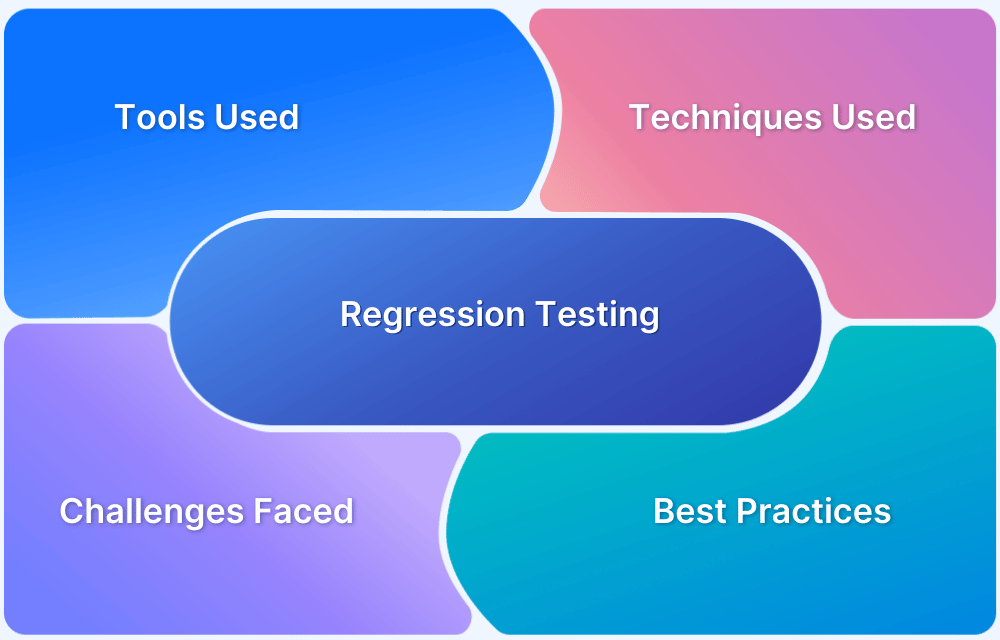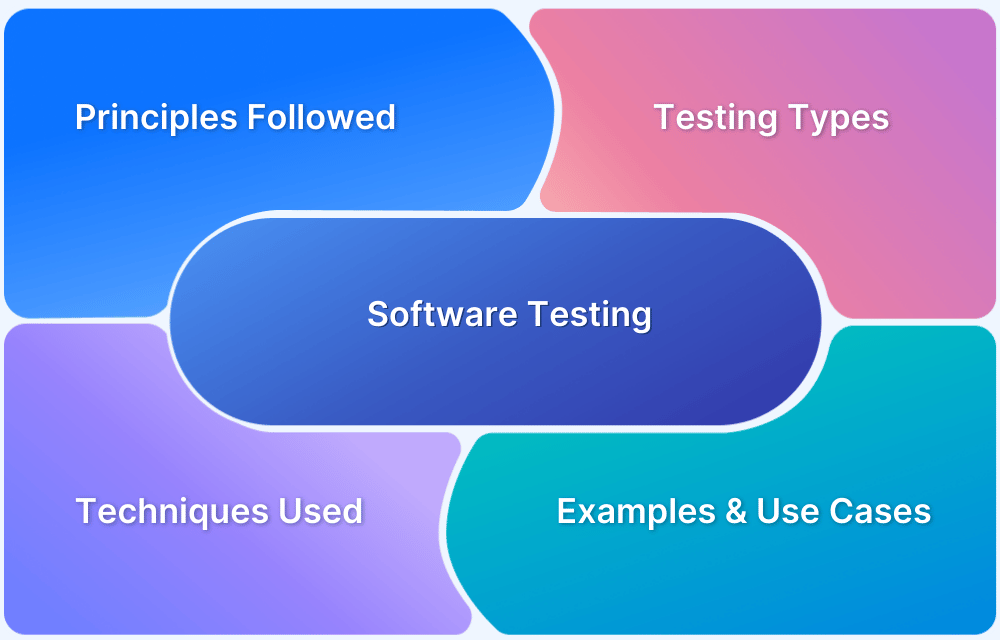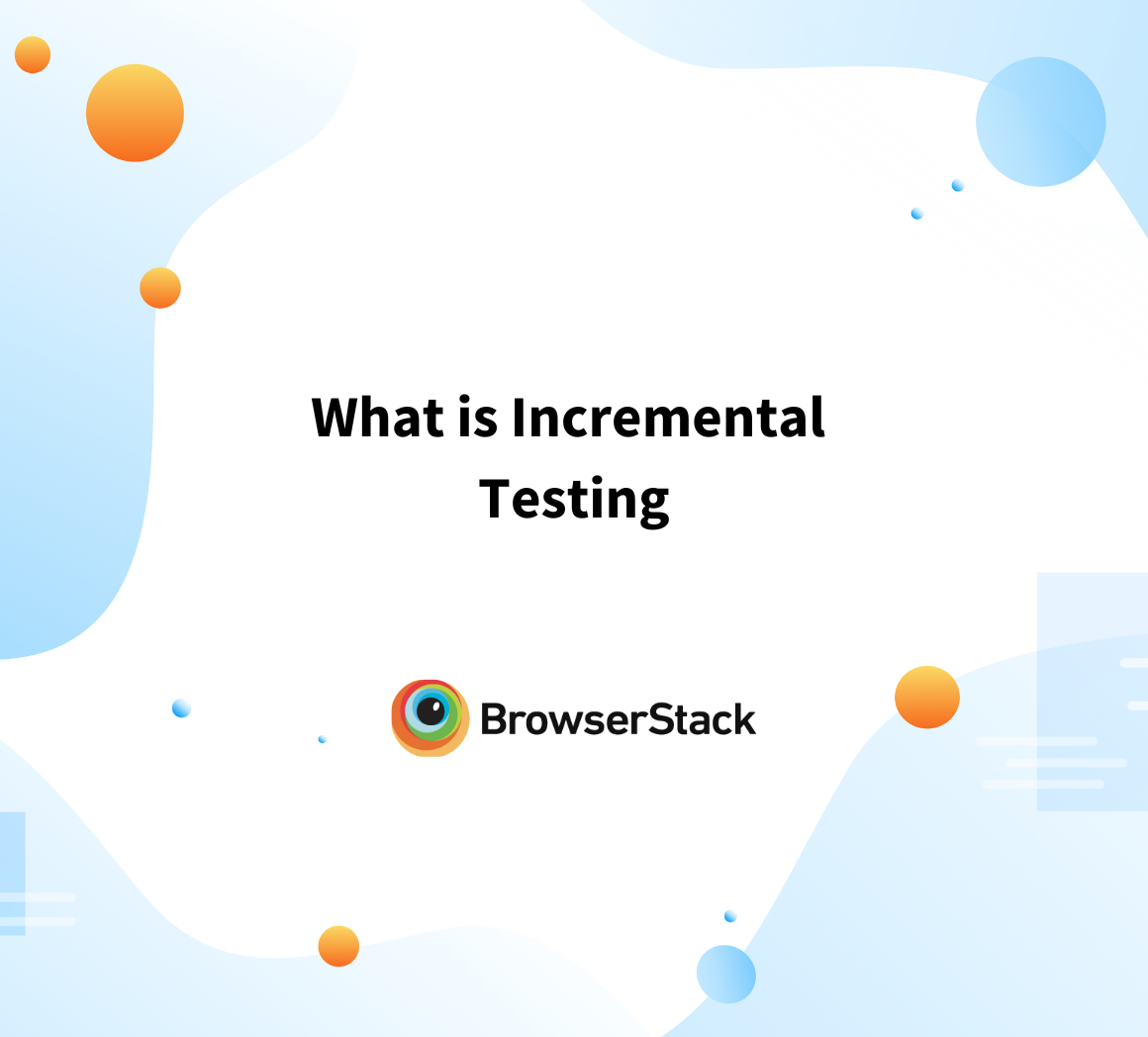What is Progression Testing
By Sandra Felice, Community Contributo - January 2, 2025
In the software world, every update & new feature brings excitement and a hint of uncertainty. Will it work as planned? Will it disrupt what already exists?
This is where Progression Testing plays a pivotal role. Acting as a reliable safeguard, it ensures that every enhancement integrates seamlessly with the existing system, preserving quality and user trust.
By balancing innovation with stability, Progression Testing empowers software to evolve and adapt while maintaining the integrity of features that users rely on.
- What is Progression Testing?
- Importance of Progression Testing
- Who Performs Progression Testing?
- When to Perform Progression Testing?
- When Not to Perform Progression Testing?
- How to Perform Progression Testing
- Manual Progression Testing
- Automated Progression Testing
What is Progression Testing?
Progression Testing, often called Incremental Testing, is a pivotal concept in Software Testing. Progression Testing is a systematic process that ensures new updates or features in software work seamlessly without compromising existing functionalities. It serves as a bridge between innovation & stabilit,y combining multiple testing approaches to deliver reliable and user-friendly software. By integrating these methods, Progression Testing helps developers and testers maintain quality while embracing change:
Functional Testing + Regression Testing + User Acceptance Testing = Progression Testing
- Functional Testing: Checks if the new features or changes meet the specified requirements.
- Regression Testing: Ensures that the new updates do not disrupt existing functionalities.
- User Acceptance Testing (UAT): Validates that the software works as intended for end users and meets their expectations.
This holistic approach makes sure smooth software evolution without compromising quality.
Importance of Progression Testing
Progression Testing ensures software evolves without disrupting existing features by catching issues early in updates. It checks both new and old functionalities, maintaining reliability and building user trust. By preventing errors from reaching users, it saves time, ensures quality, and keeps software user-friendly as it grows.
Below are the key reasons why it is important:
- Seamless Integration: It ensures smooth integration of new code with existing modules, preventing disruptions in the software’s overall functionality.
- Step-by-Step Validation: Sequential testing identifies issues early, allowing developers to resolve them promptly before they escalate.
- Accurate Issue Isolation: When a test fails, pinpointing the specific change responsible becomes easier since the rest of the system remains constant.
- Hierarchical Module Stability: Beneficial for applications with parent-child module relationships, it ensures that related modules maintain system stability.
- Enhanced Reliability: By focusing on functional, regression, and user acceptance testing, Progression Testing guarantees new additions don’t compromise existing features, ensuring overall software reliability.
Who Performs Progression Testing?
Progression Testing is typically carried out by QA testers, including manual and automation engineers. Developers often perform initial checks to ensure stable changes before passing them to the QA team.
Product managers and end-users sometimes participate during user acceptance testing to provide final validation, ensuring the software meets real-world needs. Together, this team ensures that every update works and delights the users it serves.
Also Read: How to set up QA processes from scratch
When to Perform Progression Testing?
Determining the right time for Progression Testing is essential for maintaining a stable and harmonious software environment.
It should be conducted:
- After Implementing New Features or Fixes: Ensure they function as intended without disrupting existing functionality.
- Post Integration: Once individual modules are developed and unit-tested, verify their seamless interaction and combined functionalities.
- Before User Acceptance Testing: Validate all modules to confirm they work as anticipated before presenting them for user evaluation.
- Before Major or Minor Software Releases: Check the system’s overall stability to minimize post-release issues & ensure smooth deployments.
- After Updates to External APIs or Third Party Services: Validate integrations to prevent disruptions caused by external dependencies.
When Not to Perform Progression Testing?
While Progression Testing is a powerful tool for ensuring software quality, there are scenarios where it may not be the best approach:
- Early Development Stages: Focusing on unit testing and stabilization is more effective when features are still under development or incomplete.
- For Minor Changes: Small or cosmetic updates that don’t impact functionality or performance may not require the overhead of Progression Testing.
- With Unstable Base Software: If the current version is unstable or lacks sufficient unit testing, prioritizing stabilization is a better use of resources.
- When Testing Prototypes or Rapid Iterations: Prototypes or versions subject to frequent changes are better suited for exploratory or ad hoc testing.
- In Resource Constrained Situations: Tight deadlines or limited resources may necessitate prioritizing other testing methods over Progression Testing.
Also Read: UI Testing: A Detailed Guide
How to Perform Progression Testing
Here’s a step-by-step guide to performing Progression Testing in both manual and automated formats:
Manual Progression Testing
Below are the steps for manual progression testing:
- Understand the Requirements: Review the new or modified feature and related documentation to ensure testing aligns with intended functionality.
- Prepare Test Cases: Create or update test cases to focus on the new feature and its integration with the existing system, including functional, regression, and acceptance tests.
- Set Up Test Environment: Configure the testing environment to mirror production, ensuring the correct application version with the latest updates.
- Execute Test Cases: Manually run test cases, verifying both new and existing functionalities for seamless integration and covering positive and negative scenarios.
- Document Defects: Record identified issues in the defect tracking system with steps to reproduce, screenshots, and relevant details for developers.
- Perform Regression Testing: Optionally, run previously executed test cases to confirm system stability and unaffected functionality.
- Re-test After Fixes: Re-test resolved defects to ensure issues are properly addressed.
- Sign-Off: Provide final validation and sign-off, confirming the new features are ready for release or deployment.
Also Read: Test Case Templates with Example
Automated Progression Testing
Below are the steps for automated progression testing:
- Set Up Automated Testing Framework: Select an automation tool (e.g., Selenium, Cypress) and configure the environment with necessary dependencies, including the application’s latest version and test data.
- Write Test Scripts: Develop automated scripts to verify new functionality, covering both positive and negative scenarios, and integrate them into the existing test suite.
- Integrate Regression Testing: Optionally include regression tests in the automated suite to confirm new changes do not impact existing features.
- Run Automated Tests: Execute test scripts across various environments, browsers, or devices (e.g., using BrowserStack for cross-platform testing) and monitor results for functionality and integration.
- Log and Track Defects: Document issues in a bug tracking system, using detailed reports and logs from automated tests to identify problem sources.
- Re-run Automated Tests After Fixes: Re-execute tests post-fix to confirm issues are resolved and no new defects have been introduced.
- Analyze Test Results: Review test outcomes to ensure seamless feature integration and readiness for deployment.
- Maintain and Update Test Scripts: Regularly update scripts to accommodate new or modified functionality and maintain relevance as features evolve.
Also Read: Test Case Vs Test Script
Difference Between Progression Testing and Regression Testing
Progression Testing and Regression Testing may sound similar, but they play distinctly unique roles in ensuring software stability and growth—one looks forward, and the other looks back.
| Aspect | Progression Testing | Regression Testing |
|---|---|---|
| Focus | Tests the integration of new code with existing modules | Validates that recent code changes haven’t impacted existing functionalities |
| Objective | Ensures the new additions harmonize within the system | Confirms that existing features remain intact after code changes |
| Test Scope | Primarily covers new functionalities and modules | Concentrates on pre-existing functionalities |
| Test Cases | Involves creating test cases for new modules | Reuses and reruns existing test cases |
| Usefulness | Crucial during system integration and new feature addition | Vital after code changes or bug fixes |
| Risk Mitigation | Aims to prevent issues stemming from new integrations | Guards against potential regressions due to code changes |
| Approach | Forward-looking: focuses on testing the new additions | Backward-looking: focuses on ensuring nothing breaks |
| Automation Scope | Often involves manual testing for unique scenarios or edge cases | Strongly benefits from automation for repetitive regression suites |
Understanding Progressive Regression Testing
Progressive Regression Testing is a smart testing approach that combines Regression and Regression Testing to keep up with evolving software. It ensures new features integrate smoothly while protecting existing functionalities. It’s like upgrading your house while making sure the foundation stays rock solid—offering the best of both worlds!
In Progressive Regression Testing:
- Integration Harmony: New code is tested progressively to ensure smooth integration with the existing system, reducing risks of conflicts.
- Regression Assurance: Simultaneously, regression testing ensures that no errors or bugs disrupt the stability of previously functional areas.
- Code Evolution Monitoring: Test cases & scenarios evolve with the software, adapting dynamically to reflect the latest changes for maximum efficiency and accuracy.
Progressive Regression Testing supports innovation without compromising stability, empowering teams to confidently deliver reliable, future-ready software. It’s a strategy prioritizes progress and protection in the development lifecycle.
Why You Should Transition from Progression Testing to Regression Testing
As your software project evolves, it becomes crucial to ensure that new features or fixes don’t disrupt existing functionalities. Progression Testing ensures new code integrates smoothly with the system, but as the software grows, it’s important to transition to Regression Testing.
Here’s why:
- Comprehensive Coverage: Progression Testing focuses on new features, but Regression Testing covers the entire system. It ensures that no part of the software breaks due to recent updates.
- Ensures Stability: As more code is added, the risk of conflicts and bugs increases. Regression Testing verifies that existing features continue to work as expected, maintaining the product’s stability.
- Long-Term Maintenance: After initial integration, the codebase grows and evolves. Regression Testing is essential for ongoing maintenance as it ensures that previously tested features are unaffected by future changes.
- Efficiency: While Progression Testing focuses on new modules, Regression Testing ensures the whole system remains intact, saving time and effort by catching any potential problems early on.
- Risk Mitigation: Progression Testing helps catch issues in the new code, but Regression Testing ensures those issues don’t cascade and affect the entire application. It reduces the risk of defects reaching the user.
- Making the Shift: Transitioning from Progression to Regression Testing is like moving from focusing on building the house to ensuring that it stands strong and is ready for the future.
How to Transition from Progression Testing to Regression Testing
Moving from Progression Tests to Regression Tests is crucial to ensure your software remains stable as new features are added.
Here’s a simplified approach presented in a step-by-step format:
- Identify Key Scenarios and Bugs: Select important Progression Test cases and any bug scenarios that must be rechecked in the Regression suite.
- Organize and Update the Test Suite: Include both new and old test cases to keep your regression suite organized and up to date with the latest features.
- Automate Repetitive Tests: Automate tests frequently needed to improve efficiency and consistency saving time in the long run.
- Version Control for Consistency: Track different versions of your Regression tests to align with the software version being tested.
- Continuous Testing: Integrate tests into continuous integration pipelines to provide quick feedback whenever new changes are made.
Tip: Transitioning from Progression to Regression Testing is like solidifying the foundation of a building. The new features are built on a stable base to ensure the software remains strong and reliable.
Automating Regression Tests with BrowserStack
BrowserStack Automate provides seamless integration with popular web testing frameworks like Selenium, Cypress, Playwright & Puppeteer, allowing you to automate your regression tests easily. With the ability to run tests on over 3,500 real devices and browsers, it ensures that your web app performs well under actual user conditions.
This extensive coverage guarantees that you can test across different platforms & configurations without the need to maintain a complex infrastructure. Whether it’s ensuring cross browser compatibility, performance or UI consistency the BrowserStack Automate helps to streamline your testing process by saving time while enhancing the quality of your product.
Why Choose BrowserStack Automate for Regression Testing?
Below are the reasons why you should choose BrowserStack for regression testing:
- Faster Execution: Run automated regression tests across multiple browsers & devices in parallel saving significant time.
- Consistency and Reliability: Automated tests eliminate human error by making sure consistent & accurate results across releases.
- Scalability: Easily scale your testing efforts with support for over 2,000 real browsers & devices ensuring consistent user experiences.
- Cross-Browser Testing: Ensure compatibility with popular browsers like Chrome, Firefox, Safari, and Edge.
- Continuous Integration: Seamlessly integrate with CI/CD tools like Jenkins & CircleCI, automating regression tests within your pipelines.
- Real World Testing: Test your web app on real devices & browsers by making sure your application performs under real user conditions not just on emulators.
Conclusion
Regression Testing ensures that new features integrate seamlessly with existing systems, maintaining quality and user satisfaction. By combining functional, regression, and user acceptance testing, it safeguards innovation and reliability.
As the project evolves, transitioning to Regression Testing is crucial for maintaining stability by ensuring that all components work harmoniously. Tools like BrowserStack streamline this process by enabling faster, more reliable tests across multiple platforms.
Adopting a strategic testing approach—from Progression to Regression Testing—ensures a stable, high-quality product that meets user expectations and reduces risks.
Frequently Asked Questions
What are the objectives of progression testing?
Progression Testing makes sure that any new or updated features work as expected. Its main goals are:
- Check New Features: Verify that the new features perform correctly.
- Avoid Issues: Ensure the changes don’t cause problems with existing parts of the application.
- Catch Problems Early: Spot bugs or issues quickly to save time and effort later.
- Keep Things Stable: Make sure the software stays reliable and doesn’t break after updates.




